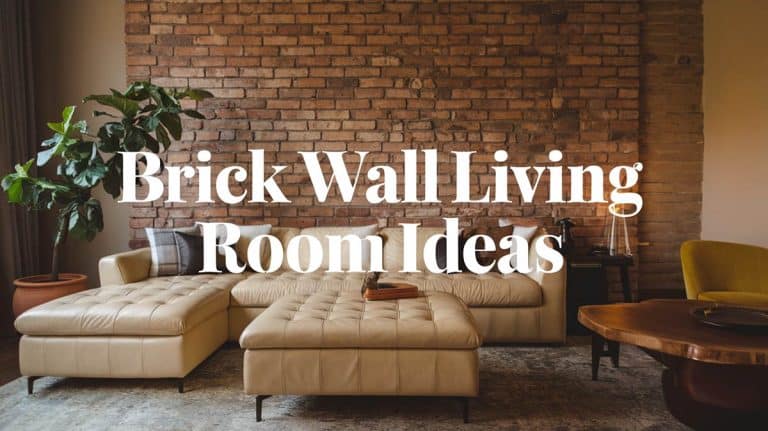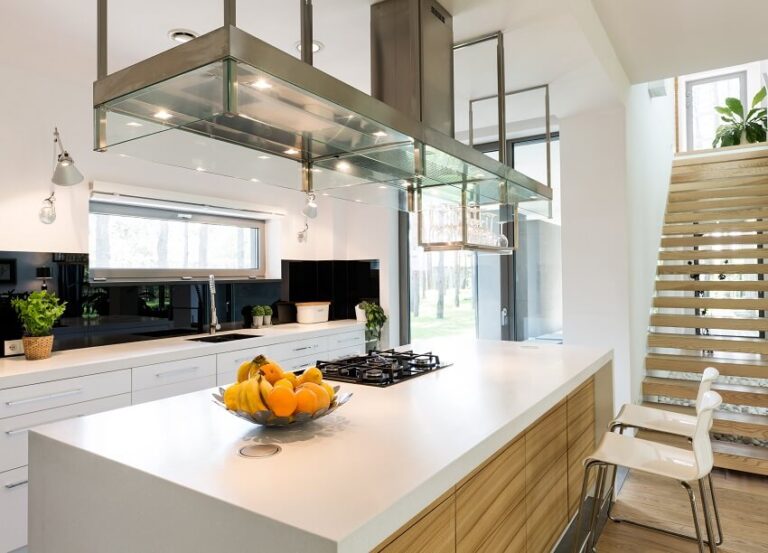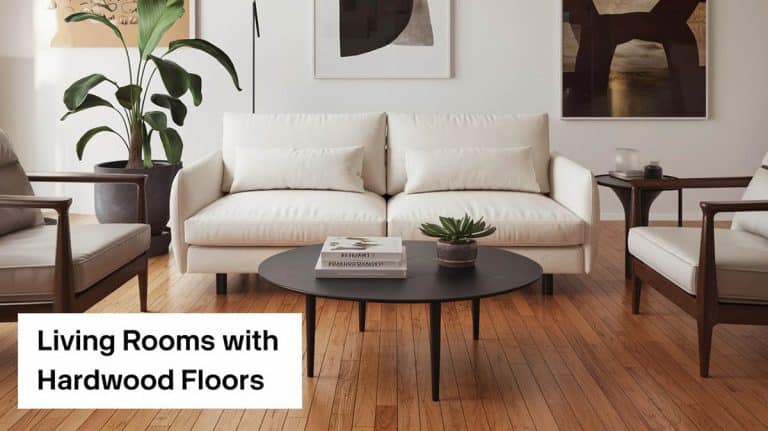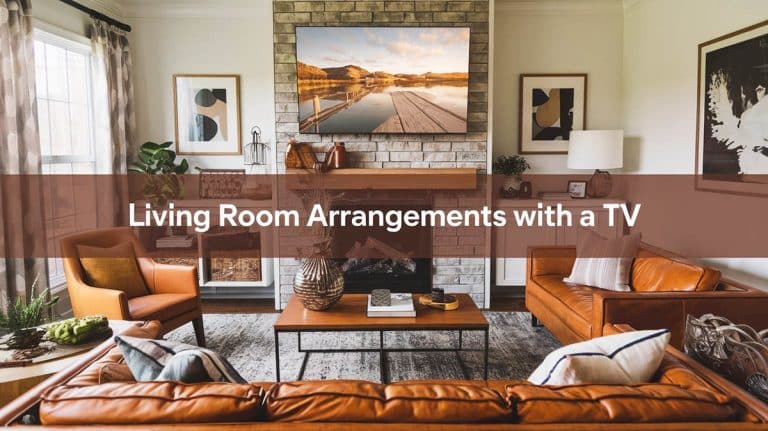11 Long Living Room Layout Ideas: Architect Designed
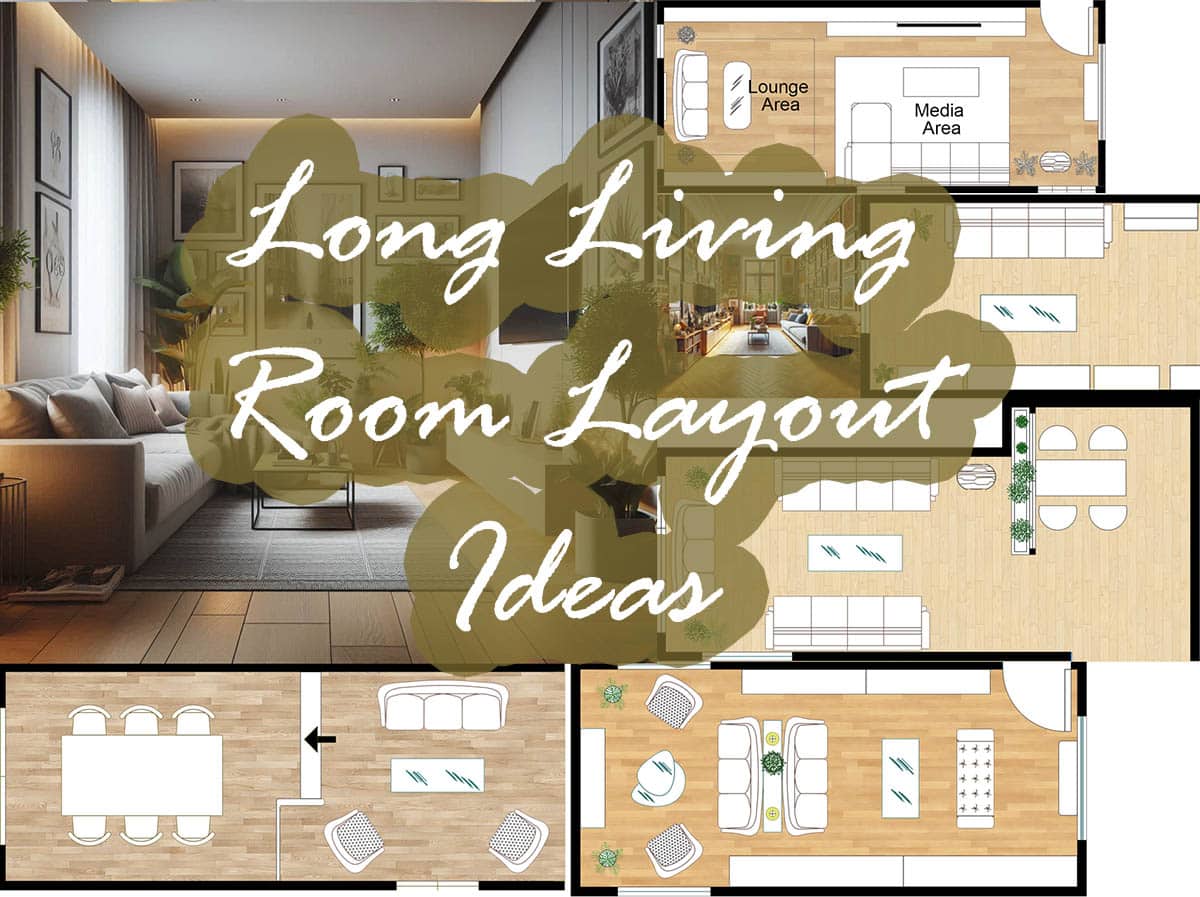
If the kitchen is the heart of the home, meanwhile your living room is considered the face of your home. That is why it’s best to put the best layout forward to achieve that inviting and comfortable space for your family and guests. However, the scarcity of real estate in many areas especially in the urban spaces can cause challenging layouts for living areas and one of them is having long living room layout ideas. In this article, we’ll tackle the different strategies and approaches that can help you elevate your long room layout.
Key Takeaway Tips For Designing A Long Room Layout
- Assign walking space between furniture pieces to prevent toppling down furniture or décor as well as create a comfortable use of the space.
- Create a focal point in the room, if there are different zones, you can assign a main focal point. This focal point should be visually dominant among other focal points.
- Place a long bench along or near your entryway such as a bench where you can drop off purses and shoes.
- In the living room, you can also create a foyer so you can redirect direct access to an entry door.
Parallel Seating

A straightforward approach in laying out a long and narrow living room that creates a symmetrical layout. Parallel seating is where a sofa is parallel to another sofa with the backing placed flush along the longest wall. This is great for long living rooms with a window, fireplace, alcove, or niche located at the center of the room’s wall.
By directing or positioning the sofa seats on each side of this focal point it creates a harmonious flow of visual views and traffic flow.
Double Seating Areas
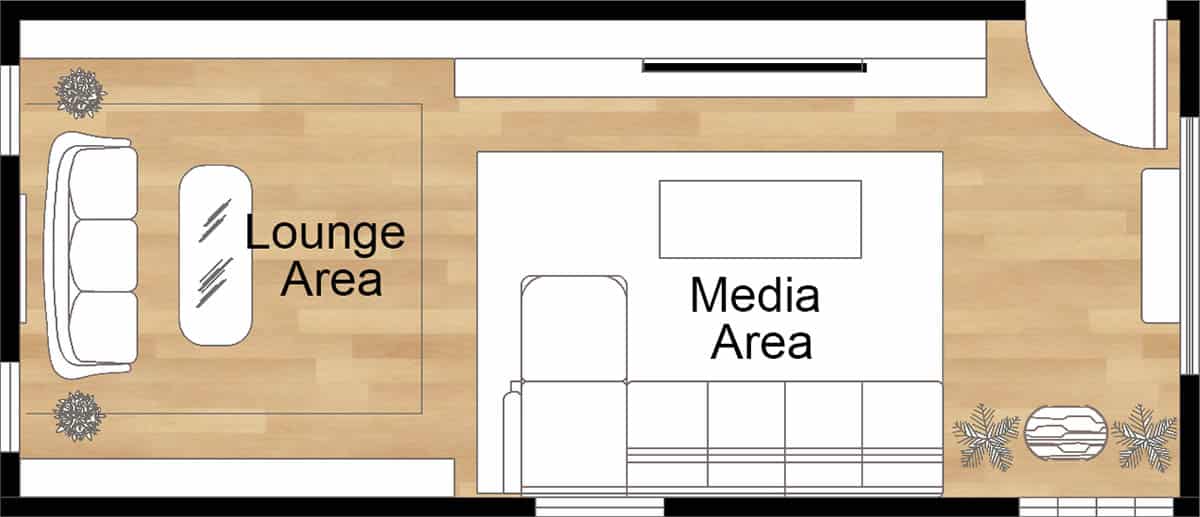
If you have a relative width that’s wide enough to satisfy the recommended distance of a wide-screen smart TV, then opt for double seating areas. Zone in a conversation space for intimate discussions and provide a seating area for watching TV or listening to music that can use an entertainment console as its focal point.
Back-to-Back Sofas
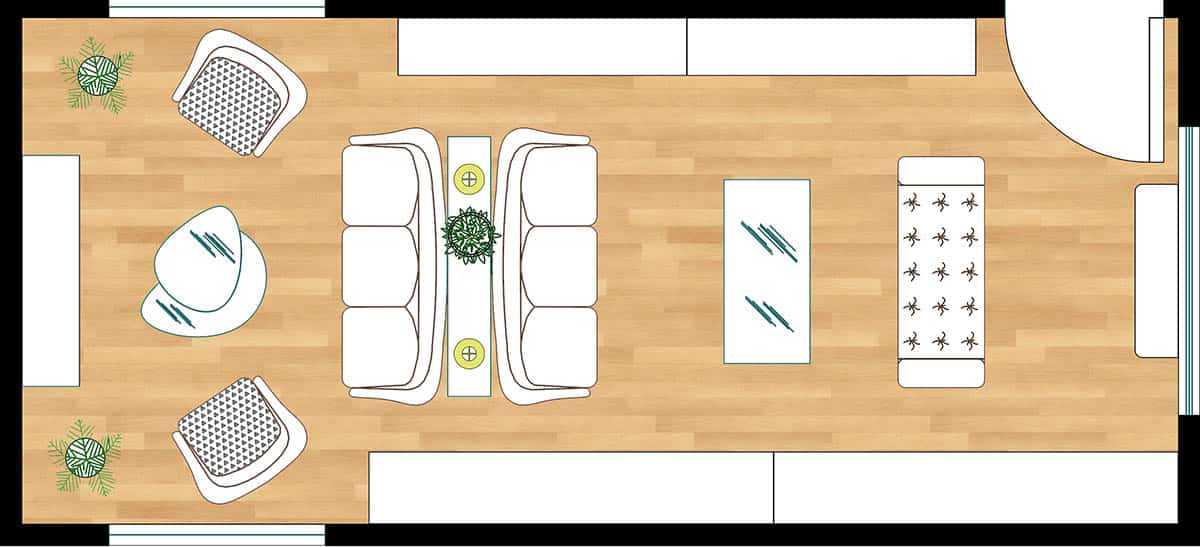
A variation to the classic back-to-back sofa is placing the two sofas back-to-back to create zoned areas but this time is divided with a thin low-profile table in between. The advantage of the back-to-back sofas is that you can create two zones without taking up much space. The compact furniture also creates a link between the areas. A version of the back-to-back sofa is to choose a back-to-back sofa with a curved backrest.
Gallery Walkway

The generous wall space is perfect for displaying your art collection. You can place two-thirds of the wall way up to the ceiling and cover the whole wall or place a distance between each painting or wall art. Choose a light color for your wall so as not to visually overwhelm the space. The light backdrop also makes the room look brighter and larger.
Circular Seating Arrangement

If you want to make your long and narrow living room look less boxy and less constrained, add curved or circular elements. A complete circle of seating arrangement may not be possible for a slim room. However, you can still opt for a semi-circular seating arrangement or choose a modular round table and chair set to be able to fit in a narrow living room. These seats can be removed when not in use.
TV and Lounge Combo
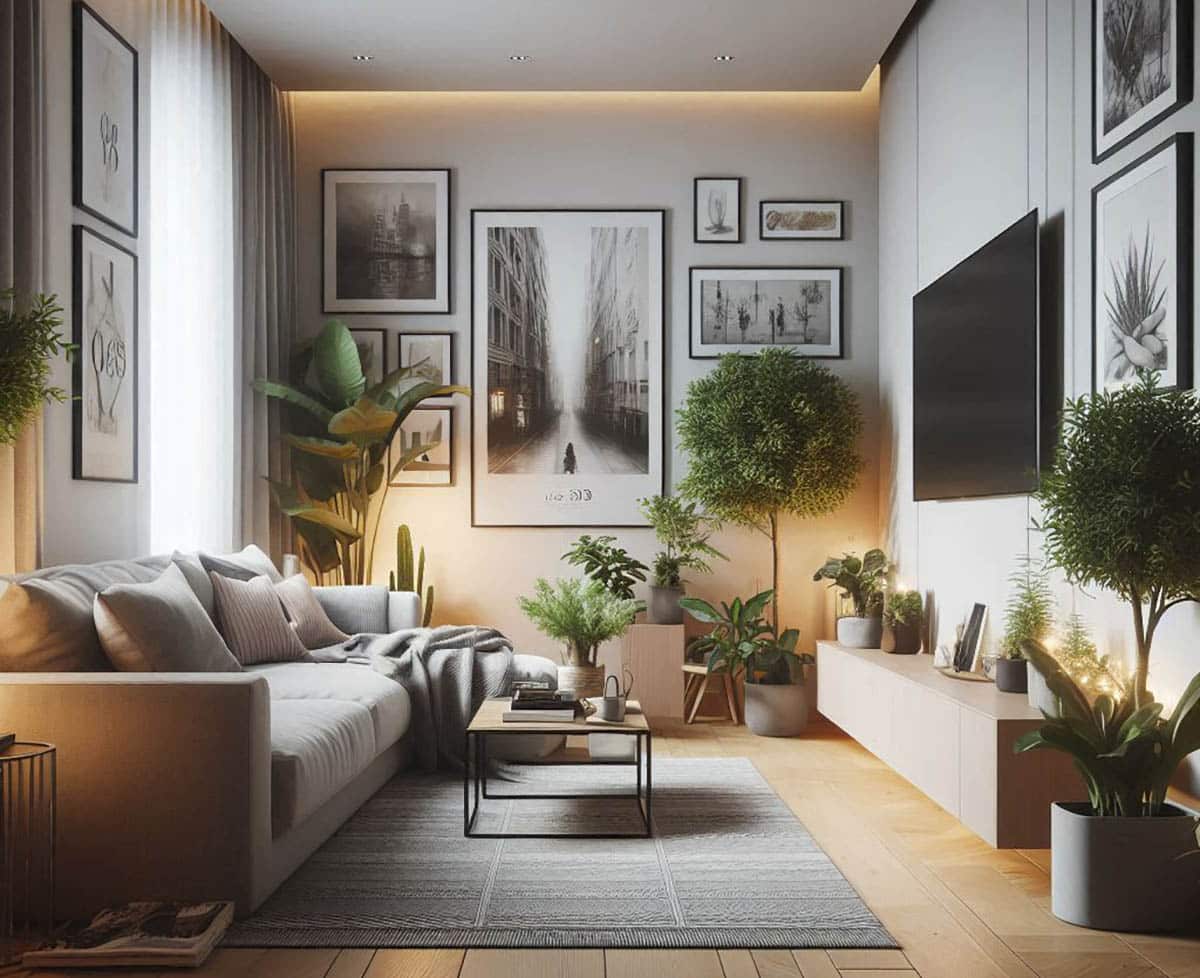
The TV and lounge combo is a common layout for different room sizes as homes with limited spaces such as apartments or condo units combine the living room with their entertainment consoles. In long and narrow living rooms the wall is expansive sideways which is a perfect area to hang your smart TV and achieve the widescreen viewing or 6:9, the widescreen ratio.
This space saving room design creates a focal point on each side unifying the space. The colors are basic or neutral tones but are warmed by wood flooring. Even the paintings stay with the monochromatic coloring. Floating entertainment consoles and low-profile furniture create less interruption in your vertical space preventing that claustrophobic feeling.
Multi-functional Zones
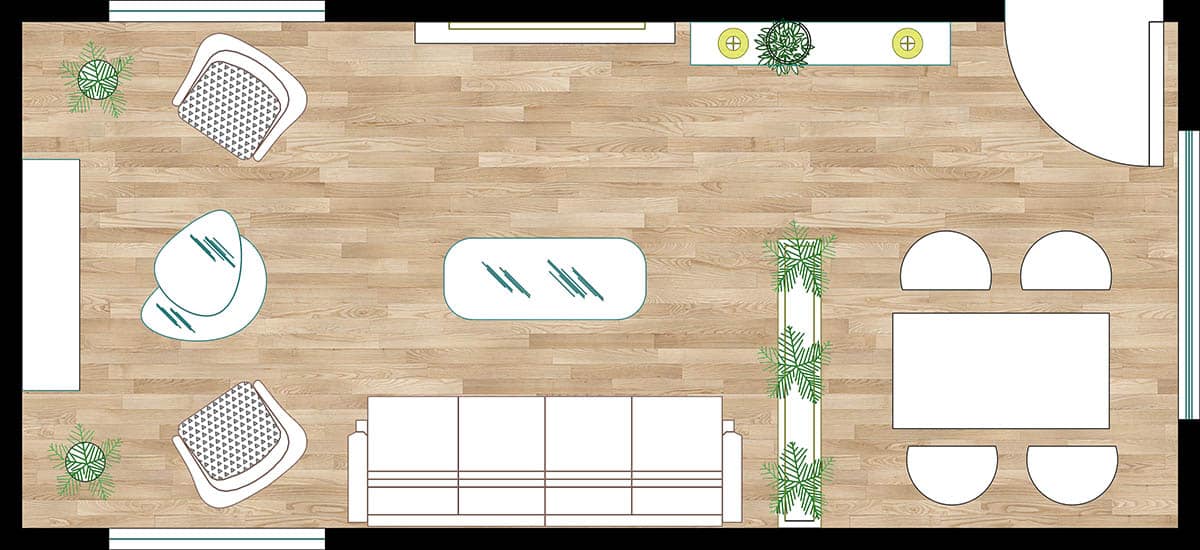
A long room can be further subdivided into smaller areas to accommodate different activities. Since living rooms are public spaces accessed by the owners and guests, you can zone in different activities. A study area, media console area, lounge area, and dining area are a common combination. You can also add a loft area to take advantage of the vertical space, especially if you are living in an apartment unit or in a residence that has a limited area. It is recommended to have at least 10 feet of ceiling height to accommodate a loft area.
Living and Dining Split Room Combination
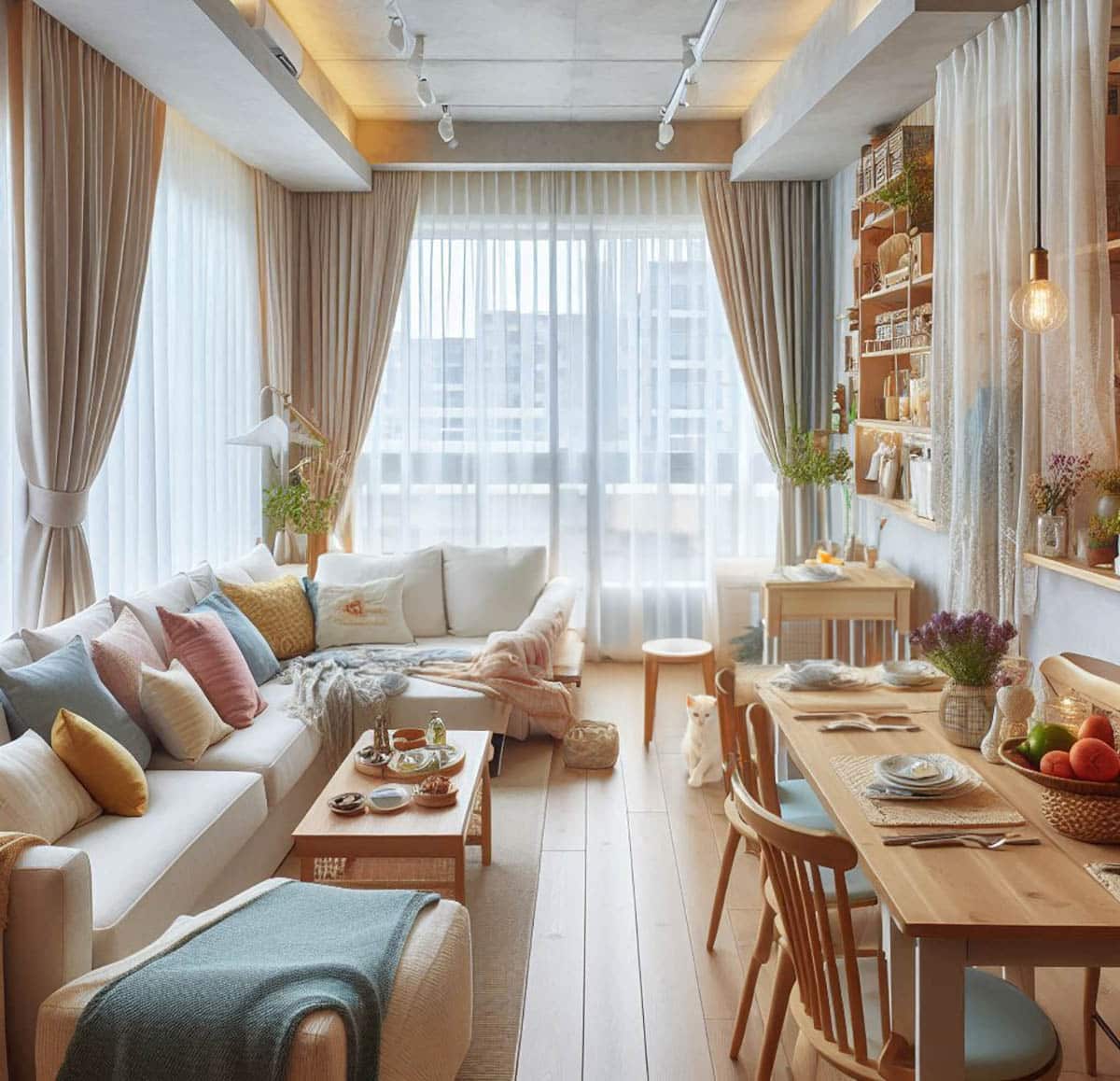
Since both functional areas require an ample number of seats to accommodate multiple users at the same time, combining the public spaces has many advantages. One of them is having flexibility between the two areas. You can reconfigure the layout during special occasions when more people will be using the space. Modular furniture is best to use in both areas, so it’s easy to reorient and connect seating elements.
Diagonal Layout
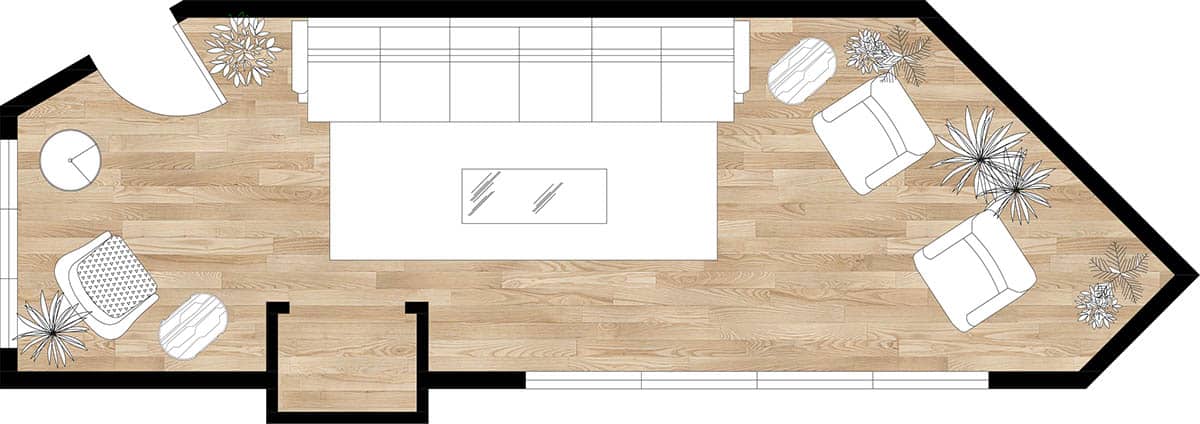
For rooms that have angular shapes, you can fill in odd corners by laying out your chairs or sofa seats in a diagonal manner. This gives dimension to rectangular shapes and a degree of continuity and connection between furniture. Alternatively, you can go with curved furniture with the same approach of positioning your seats along the diagonal walls.
Split Level Layout
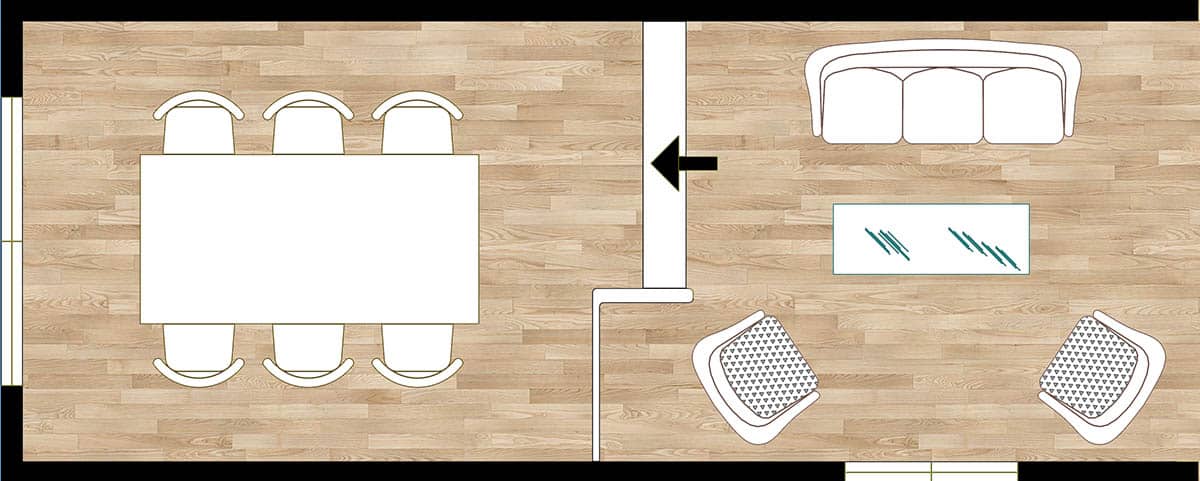
When you have a long living room, creating zones is a basic approach to utilizing the space, and one method that’s effective in distinguishing areas is by the split-level layout. This is practical when you are still in the process of constructing or renovating your living room since you minimize the unnecessary need to dismantle your space.
Create a Divider that’s Semi-transparent

If you are looking for a way to position a study or breakfast area without disturbing your lounge space, then go with a transparent divider. This works well for an open plan room to create a separate livable zone. At the same time, this layout maintains the continuous flow of light and space as well as subdivides the long space. Clear acrylic or glass is often used to allow light to pass through.

